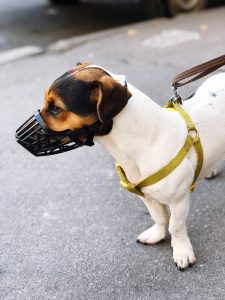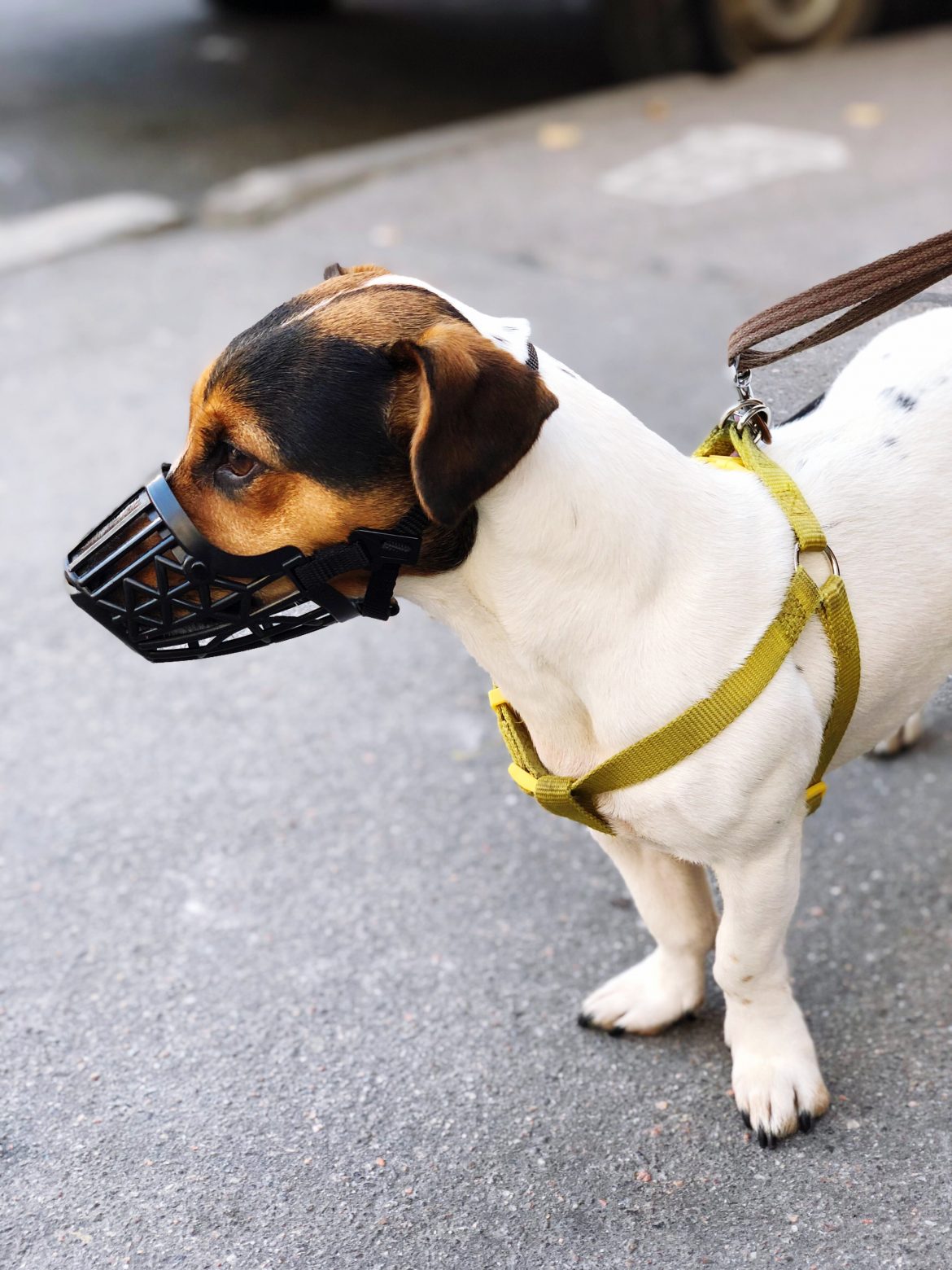Muzzle training isn’t a popular idea with Dog Owners. That’s probably because many of us have ideas about what kinds of dogs need muzzles – the bad, aggressive, unpredictable dogs. In any event, they surely don’t belong on our sweet, docile companions. However, there are actually a few reasons why muzzle training could be a positive experience for your sweet-tempered pup, your trusted Dog Walker, and you.
The misinformation floating around muzzle training has been around for a long time. Even when we started researching this topic, we have to say, it surprised us! Despite the stigma, the research keeps telling us that muzzles can be a good training tool. Not only can they can keep our pups healthy, they’re often crucial in emergency situations. With this in mind, let’s start breaking down some of those muzzle misconceptions.

First, let’s put to rest some muzzle training hesitations
For humans, the look of a muzzle evokes some fears. Can our pup breathe? Can they drink water? Does it hurt them? Are they able to pant? Is it uncomfortable?
When you find the right muzzle for your pup, you don’t have to worry about any of these things. A good fitting muzzle will allow your dog to open their mouth wide enough to pant, drink water, and breathe freely. And it definitely shouldn’t be painful for them.
As for the comfort factor, this will depend on the training process. Sure, if you force your dog into a muzzle on day one, they’re going to feel uncomfortable. But, if you work at it gradually and allow your dog to make positive associations with the muzzle, your pup will see it as something normal. No more discomfort than a collar, harness, or leash.
Muzzles are for bad dogs, right? Why should I muzzle train my dog?
Muzzles can be a safety tool for all dogs – not just “bad” dogs. The big, the small, the ones who like to play rough, and the ones who are timid and shy. And here’s why:
- Muzzles can prevent your dog from eating things they shouldn’t. Let’s say you’ve got a dog who loves to eat poop. You take your eyes off them for a moment and when you look back, they’ve already gobbled it down whole. With a muzzle, they can still get their nose in some undesirable stuff, but they won’t be the vacuum cleaner they normally are.
- Muzzles can lower stress at the vet and the groomers. If you have a dog that tends to get hysterical when they’re getting their vaccinations or their nails trimmed, muzzle training is a great solution. Everyone in the room will be more relaxed, and your pup will breathe a little more easily, too.
- Muzzles can be a great tool for meeting new friends. If you’re introducing a new animal into the home, especially a small animal like a rabbit or a cat, having your dog in a muzzle can make the socialisation process safer and less stressful for everyone. You can also apply this tactic to introductions between new dogs and babies. Muzzle training is a great companion to our tips for introducing dogs to babies and introducing your dog to new dogs and humans.
- Muzzles can help you introduce your dogs to new environments. Let’s say you’re going out of town, and will be leaving your furbaby in the care of a trusted Pet Sitter. It can be helpful to introduce your dog to the new environment in their muzzle until you can be sure that they’re 100% comfortable. That will prevent any fear-related accidents.
- Muzzles can gain your pup access to more public places. Many areas that allow dogs stipulate that your pup needs to be in a muzzle. And, as muzzle training becomes more common, we anticipate that doggos are going to be invited to even more events. Muzzle training right now can ensure that your dog can tag along to more outings.
- Muzzles are key during emergency situations. When dogs experiences high levels of stress, they’re more likely to lash out, even towards loved ones. Emergency responders will have a much easier time taking care of your dog when they’re wearing a muzzle, which could save your dog’s life.
The key to muzzle training is patience
Muzzle training takes time. It’s important to start slow, and if possible, when your dog is a puppy. No matter what, make sure to give love, treats, and praise often. And have patience. Your doggo will tell you when they’re ready for the training to continue.
If you commit to muzzle training, it can be a great benefit for your pup. They’ll be safer. You’ll be calmer. And we’ll all have a happier doggo community.

